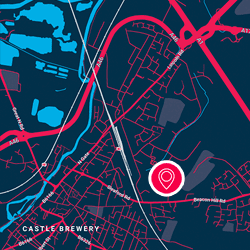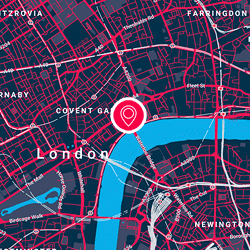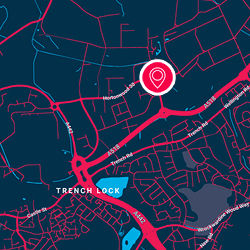HEAD OFFICE IT SOLUTIONS
Building solid foundations for dynamic portfolios to succeed
The beating heart of a successful property portfolio lies inside housing association offices, which are powered by head office IT solutions. The central offices from which housing projects inter-connect face challenges quite different to their mobile and disparate counterparts. Even with many core services having migrated to the cloud, housing association offices often retain legacy hardware, provide central spaces for support functions to operate and act as the connection point for the various housing projects.
These factors alone present unique challenges, including staff training, resilience, and security. However, the individual head office IT solutions that address these challenges should be aligned to form an over-arching strategy that will not only prepare the business for today, but also enable future developments. The digital strategy for housing associations is therefore the key to longevity and success.
Enabling digital transformation in housing association offices
One similarity that housing associations has with other industries is the natural progression of technology within the headquarters. Mature housing associations with broad portfolios will likely still retain on-premise hardware that requires support, backups, and maintenance. Even though common applications may have moved to the cloud, such as Microsoft 365, HR solutions and even accounting software, physical servers are found to house services such as domain controllers, Exchange servers and even business critical files.
A common trigger for cloud migration is an outage or a security threat. Organisations react to threats by moving necessary services to a cloud platform such as AWS or Microsoft Azure, but too often critical services are left behind, exposing the housing association to more risk.
With the adoption of public and private cloud services comes greater visibility on services and network health. A key driver for sustained productivity is the ability to make informed decisions based on facts. It is this illustrative data that physical hardware environments are unable to provide, therefore what makes a digital solution an effective means of decision making.
Physical servers require support and maintenance which often involves planned downtime, trained staff, and the cost of replacement parts. Physical servers are not only a risk to organisations, but they hold social housing providers back from disrupting the market. By enabling technology led change within a housing association organisation, the opportunities to grow portfolios, meet deadlines and stay on budget, are endless.
The changing digital landscape and working patterns are reducing the pressure on housing associations to provide central offices from which support functions can operate alongside customer facing roles. A modern workplace is one that can flex to change and enable greater productivity by focusing on the end user requirements. Roles no longer have defined boundaries from which they can be performed. The technology that housing associations adopt should reflect the needs of their employees by providing them with the right tools, where and when they need them, while still allowing IT to manage them effectively.
Agile Connectivity – linking Residents, Employees and the organisation
In the same way that many housing associations often cling to legacy hardware, the digital landscape and working patterns have altered the way in which the industry’s head offices are connected. Larger housing associations may still utilise analogue technology for telephony, fax and even alarm systems, and the security focus may be centred around the permanent offices.
The challenges surrounding the head office connectivity have an impact across the portfolio. With more and more applications and services moving to SaaS and the cloud, it is imperative that the digital strategy is designed with the future in mind. Consideration should be given to services that currently reside on legacy hardware, for agility to be achieved.
The modern housing association, however, understands the value of SaaS applications, and the need for employees to work from anywhere. The capability to securely connect offices and projects at all stages lies within digital transformation. Adopting technologies that provide staff with the same experience wherever they are is important, but doing so securely, is crucial.
Creating resilient, reliable and secure connectivity across housing association offices allows consistent connectivity to employees at every stage of the project lifecycle, from construction phases through to handover. Historically, managing data connections to projects in the early stages has produced challenges for housing associations. But, with an effective connectivity strategy, IT teams can optimise live services, create uniform security practises and stay ahead of the competition.
By adding visibility and security to housing association offices, centralised IT teams can ensure that data is optimised at the application layer, and at no stage is security compromised, and with every project in the portfolio connected and operating well, the organisation can focus on delivering excellence.
Keeping business sustainability in line with social and environmental responsibilities
Ensuring projects are delivered on time and on budget is one of the key challenges of any housing association. However, with society’s growing appetite for environmental responsibilities and the government’s keen eye on energy saving, that challenge is significantly increased.
But more than that, the headquarters of a housing association should speak the language of the organisation. If the modern housing association boasts values that sing to the tune of environmental awareness, then so too should the offices. A digital strategy should align with the organisations environmental concerns and should empower the business to demonstrate the carbon footprint with pride. Businesses can utilise technology to enable productivity and agility, or to create cost-effective services and a greater tenant experience. But few organisations manage to achieve this sustainably, and in the housing industry, environmental concerns rank high in the list of modern requirements.
Our housing industry success
We understand the challenges within housing association offices extend beyond the remits of legacy hardware, agile connectivity and sustainability. We understand this because we listen to our tenants. Our approach to bringing agility and resilience to housing association businesses is one based on experience and success. Our solutions are designed with your employees and your customers in mind, because we know your success lies with delivering excellence to both.
Download our free guide to head office IT solutions







